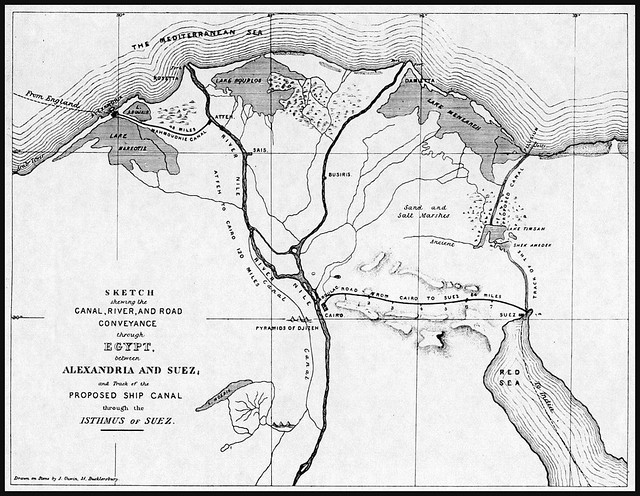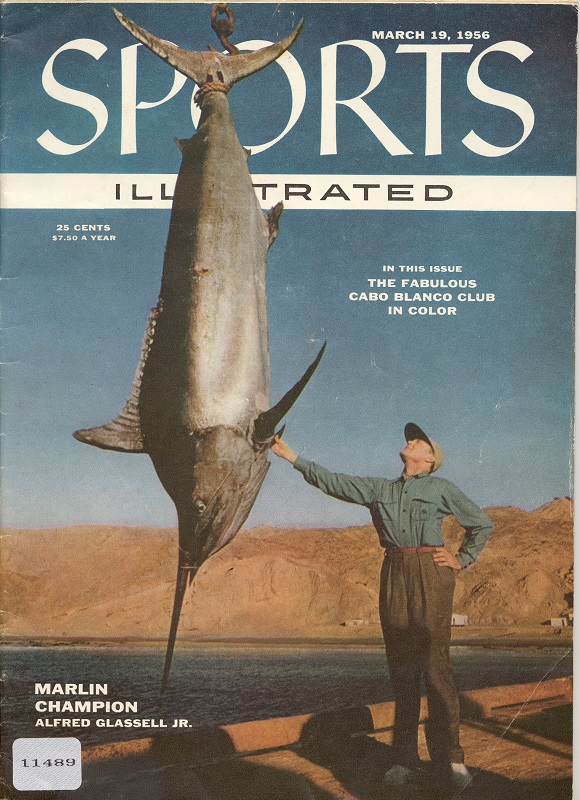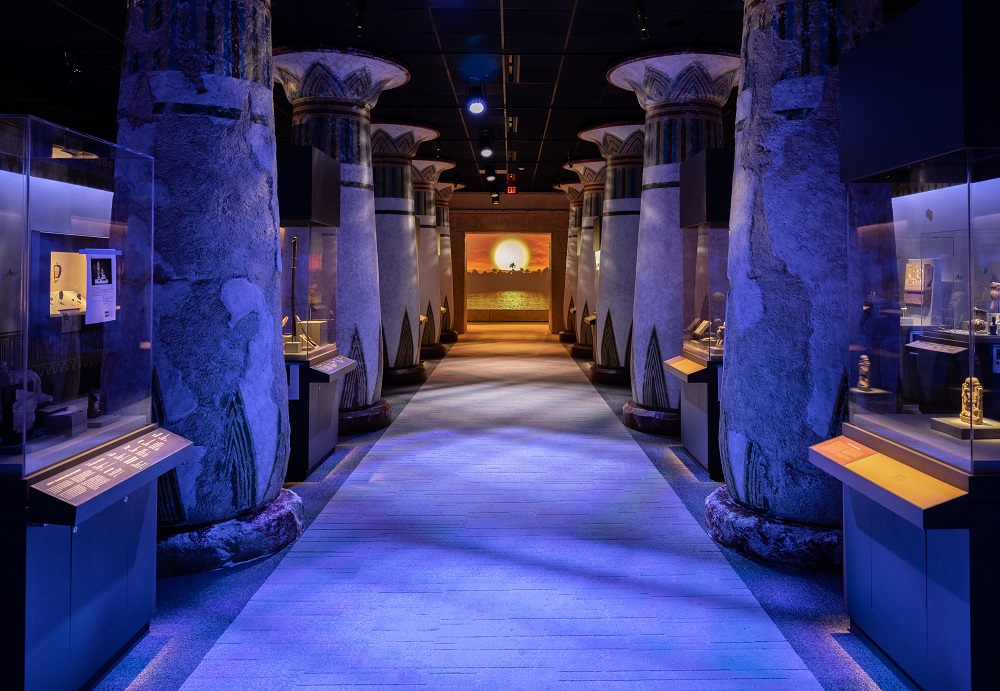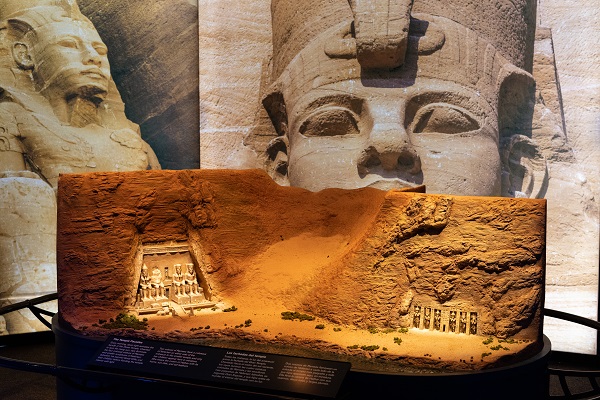As you walk through our new Hall of Ancient Egypt, you might wonder how we know so much today about a civilization that thrived thousands of years ago. Here is how we got there: For most of the Middle Ages and even during the Renaissance, ancient Egypt was a vague concept in the Western world, most often associated with Biblical history. All of that changed in 1798.
Napoleon in Egypt and the discovery of the Rosetta Stone
Less than 10 years after the French revolution, Napoleon invaded Egypt. His army was accompanied by scientists, scholars and artists, who collected artifacts and mapped a good number of sites. With the support of Napoleon, this group of people known as the “Savants” started a center for the study of ancient Egypt, the Institut d’ Égypte. Sadly, in 2011, the Institut was severely damaged and most of its library destroyed.
The work by the French scholars culminated in a magnificent and monumental multiple-volume publication, the Description de l’Égypte, which appeared between 1809 and 1828. These volumes unleashed a wave of Egypt-o-mania in European art and design. This wave eventually reached American shores.
The month of July 1799 was of utmost importance in the history of deciphering Egyptian hieroglyphic writing. Sometime around the middle of that month, Pierre François Xavier Bouchard, an officer of the Engineers, found what we now call the Rosetta stone. He was working on reinforcing the defenses of a small fort on the west bank of the Nile, near the small port of el-Rashid (the ancient Rosetta).

Map of the Nile Delta, identifying the location of Rosetta, where the famous inscription was found. Image courtesy of michelhoude.com
Bouchard realized that the stone slab he had found was part of a larger stela inscribed in three scripts. The stone was cleaned, and the ancient Greek text of the inscription translated. Among other things, the Greek text conveyed the order that the inscription be recorded in three different scripts: ancient Greek on the bottom portion, ancient Egyptian hieroglyphs in the top portion. The middle portion was initially thought to have been ancient Syriac; we now know that it is demotic.
News of the Stone’s discovery spread fast. By August 1799, the inscription was in Cairo, at the Institut d’ Égypte. Copies of the text reached Paris by the fall of 1800. We should not forget, however, that there was still a war being fought in Egypt. French forces, initially successful in the conquest of Egypt, were slowly being defeated by an Anglo-Turkish army. After Admiral Nelson destroyed the French fleet at anchor in the bay of Aboukir, and after Napoleon ignominiously slipped through a British blockade on one of the few surviving French ships, a French defeat was inevitable.
By August 31, 1801, the last French units to offer resistance surrendered in Alexandria. By then, the Rosetta Stone had been transported from Cairo to Alexandria to keep it in the hands of French explorers and out of the hands of anyone else. But it was not to be. The victorious British forces took possession of the Stone, after allowing the French scholars to make a cast of the monument. A British warship carrying the Rosetta Stone arrived in Portsmouth in February 1802. It was placed in the London-based Society of Antiquaries, where several plaster casts were made. Engravings made of the inscription were made and widely distributed throughout Europe and even the United States.
The easiest portion of the inscription to translate and publish was the ancient Greek text. The translation, made in 1802 and presented as a paper, was published 10 years later in 1812. The Stone itself was officially donated to the British Museum by King George III in 1802; a painted text on one of the stela’s sides commemorates this act. With only two exceptions, it has remained in the British Museum ever since. Towards the end of the First World War, in 1917, when the Museum was concerned about heavy bombing in London, they moved it to safety along with other portable, ‘important’ objects. The Rosetta Stone spent the next two years in a station on the Postal Tube Railway 50 feet below the ground. Other than during wartime, the Rosetta Stone has left the British Museum only once. In October 1972, it was displayed at the Louvre in Paris alongside Champollion’s Lettre to mark the 150th anniversary of its publication (p. 23).**

Cover of Champollion’s Lettre a M. Dacier. Image courtesy of Wikimedia
Even though the inscription is known as the Rosetta Stone, referring to the ancient settlement of Rosetta, it is most likely that the stela fragment was brought to Rosetta as construction material from a more ancient site further inland. It is also probable that it was already broken by the time it was moved to the site of its discovery (p. 26).**

Reconstruction of the Rosetta Stone. Image courtesy of Wikimedia
Based on similar decrees of the same period, it is likely that the original shape of the Rosetta Stone included a rounded top, as can be seen in the reconstruction drawing (p.26).** The shape of the monument can also be seen toward the end of the last line of the hieroglyphic text.

Black and white drawing of the Rosetta Stone. The original shape of the monument is shown in the final portion of the last sentence written in hieroglyphs. Image courtesy of Wikimedia
The original shape of the monument is shown in the final portion of the last sentence written in hieroglyphs.
Deciphering Egyptian hieroglyphic writing and the role of the Rosetta Stone.
The decipherment of the Rosetta stone involved the contributions of many individuals. Among these were Swedish scholar Åkerblad; two British men, Bankes, a collector of antiquities, and a linguist, Young. Across the Channel, there were two Frenchmen, the orientalist de Sacy and a fellow by the name of Champollion.
An initial step towards reading ancient Egyptian texts came when de Sacy, working on the demotic portion of the text, identified the name of Ptolemy. In 1802, Åkerblad identified the demotic equivalents of “Egypt”, “temples”, “king”, and “Greek.” Unfortunately, both men were hampered in their attempts to crack the hieroglyphic portion by firmly believing that this script was alphabetical, a premise that proved to be false (p.31).**
In 1816, the British scholar Thomas Young, identified the name Ptolemy inside a cartouche on the hieroglyphic section of the stone. Using insights from the demotic text, he assigned the correct values of p, t, ma/m, i, s to five hieroglyphic signs (p.31).** In 1821, in a similar exercise, Bankes correctly translated the name “Cleopatra” inside a cartouche on an obelisk from Philae.**
It was a French scholar, Champollion, who by 1822 truly broke the code. Working with an engraving of the stone and a rendering of it in the Description, Champollion managed to go further than other researchers of his time. By 1822, he was aware of the work done by Young and Bankes. Working with a total of fourteen signs, he deciphered cartouches of other members of the Ptolemaic dynasty and even some Roman emperors. All of this led to Champollion writing his report, the Lettre à M. Dacier, which was read at the Académie des Inscriptions et Belles Lettres in Paris on September 27, 1822 (p.35).** In 1824, Champollion’s letter was published. Subsequent application of Champollion’s insights on Egyptian texts in the British Museum collections proved that he was correct(p. 38 – 39).**
Champollion did not live long to savor his achievement. He was appointed curator at the Louvre in 1830. He held this position until 1832, when he died from a stroke (p.40).**
We all benefit from the hard work of these pioneers and those who came after them. They made it possible to read a vast corpus of ancient Egyptian texts. Texts carved in stone, like the Rosetta text, as well as those painted on pottery shards and shell, or carved in wood, are on display at the Houston Museum of Natural Science. Each in their own way lift the veil of this distant past. Their messages vary from prayers on a papyrus to a medal issued to a soldier; all help us to understand what it must have been like to walk and talk like an ancient Egyptian.
What did the text on the Rosetta Stone say?
The inscription dates to 196 BC. It is an official document, with a message of thanks – in triplicate – from some priests to the ruler of Egypt, Ptolemy V. Its content is interesting for those who like Hellenistic history; others might think that reading a part of the IRS code is equally interesting. A translation of the demotic portion of the inscription can be read here.
At the end of each text portion, we read that “the decree should be written on a stela of hard stone, in sacred writing, document writing, and Greek writing, and [that] it should be set up in the first-class temples, the second-class temples and the third-class temples, next to the statue of the King, living forever.” It is therefore very likely that several copies of the Rosetta Stone exist, as yet undiscovered.
**Dates and other factual information sourced here, for further reading: Parkinson, Richard, 1999. Cracking Codes. The Rosetta Stone and Decipherment. University of California Press, Berkeley.







